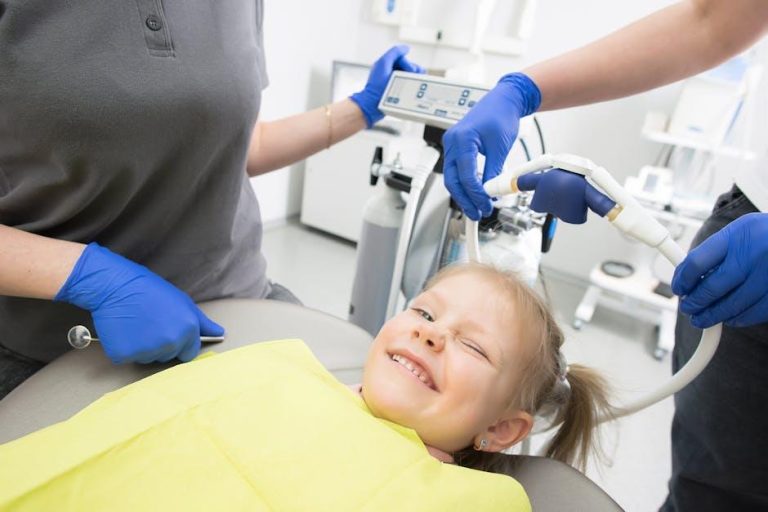
1 in 3 Kids Has Dental Problems, Poll Finds – U.S. News & World Report
Recent findings from a comprehensive poll have brought a concerning statistic to light: one in three children in the United States currently suffers from dental problems. This alarming fact highlights an urgent public health issue often overshadowed despite its long-term impact on children’s well-being. In this article, we dive deep into the causes, consequences, and practical measures parents and caregivers can take to safeguard kids’ oral health.
The Current State of Children’s Dental Health in the U.S.
Dental problems among children encompass a broad spectrum, ranging from cavities (tooth decay), gum disease, to orthodontic issues. This poll, conducted by a reputed research firm and published in U.S. News & World Report, surveyed thousands of families and pediatric dental practitioners nationwide. The results showed:
- 33% of children under age 12 have at least one untreated dental problem.
- Tooth decay (cavities) remains the most common chronic childhood disease.
- Dental health disparities are pronounced in low-income and minority communities.
- Many children have limited access to professional dental care and preventive treatments.
Why Are Dental Problems So Widespread Among Kids?
Several factors contribute to the high prevalence of dental problems in children. Understanding these can help parents take better action:
- Poor oral hygiene habits: Irregular brushing and flossing lead to plaque buildup and cavities.
- Diet high in sugar and acidic foods: Sweets, sodas, and fruit juices promote tooth decay.
- Lack of early dental visits: Delaying dental checkups results in missed opportunities for early detection and treatment.
- Limited fluoride exposure: Fluoride helps strengthen enamel; insufficient use can cause weaker teeth.
- Socioeconomic barriers: Families without dental insurance or nearby clinics face challenges in accessing care.
Impact of Poor Dental Health on Children
Dental problems in childhood do more than cause pain or cavities—they have wide-ranging consequences affecting physical health, academic performance, and emotional well-being.
| Impact | Description |
|---|---|
| Pain and Discomfort | Untreated decay and infections can cause severe toothache, impacting eating and sleeping. |
| Difficulty Eating | Chewing problems can lead to poor nutrition affecting growth and development. |
| Speech Issues | Missing or damaged teeth may hamper proper speech development in early childhood. |
| Academic Challenges | Pain and distraction from dental problems often cause missed school days and reduced concentration. |
| Low Self-Esteem | Visible dental issues can lead to embarrassment and negatively affect social interactions. |
Practical Tips to Prevent and Manage Dental Problems in Kids
Preventing dental issues is far easier than fixing them later. Here are expert-backed strategies every parent should prioritize to protect children’s oral health:
- Begin dental care early: Start brushing a child’s teeth with fluoride toothpaste as soon as the first tooth erupts, ideally twice daily.
- Schedule regular dental checkups: Visit the dentist by the child’s first birthday and at least twice a year thereafter.
- Limit sugary and acidic foods: Encourage balanced meals and healthy snacks like fruits, cheese, and nuts.
- Promote good hygiene habits: Teach kids to brush correctly for two minutes and floss daily, making it fun and consistent.
- Use fluoride treatments: Consult your dentist about fluoride varnishes or supplements, especially for children at higher risk of cavities.
- Educate on the dangers of prolonged bottle or sippy cup use: Avoid putting sugary liquids in bottles to prevent baby bottle tooth decay.
- Ensure access to dental care: Utilize community dental clinics and insurance programs if cost is a concern.
Helpful Oral Hygiene Routine for Kids
| Step | What to Do | Frequency |
|---|---|---|
| Brushing | Use a child-sized toothbrush with fluoride toothpaste; brush gently for 2 minutes | Twice daily (morning and before bed) |
| Flossing | Clean between teeth to remove plaque and food particles | Once daily, once teeth touch |
| Rinsing | Use a fluoride mouth rinse (if recommended by dentist) | Once daily (age 6+) |
Case Study: Improving Dental Health in Underserved Communities
In several U.S. regions with limited access to dental care, community outreach programs have made significant progress. For instance, a school-based dental initiative in Ohio provided free fluoride varnish and education workshops. Over a year, dental problems among participating children dropped by nearly 20%, improving their overall health and school attendance.
This illustrates that increased awareness combined with accessible preventive services can dramatically reduce the burden of childhood dental disease. Stakeholders, including schools, healthcare providers, and policymakers, must collaborate to replicate such success across the country.
Conclusion: Prioritizing Children’s Oral Health for a Brighter Future
The poll’s finding that 1 in 3 kids struggles with dental problems is a clarion call for immediate action. Dental health is a critical component of children’s overall health, impacting how they eat, speak, learn, and socialize. By embracing preventive habits, fostering regular dental visits, and addressing disparities in care availability, parents and communities can reverse this troubling trend.
Remember: healthy smiles in childhood lay the foundation for a lifetime of well-being. Start early, stay consistent, and seek professional guidance to ensure every child enjoys a lifetime free from preventable dental pain and complications.


